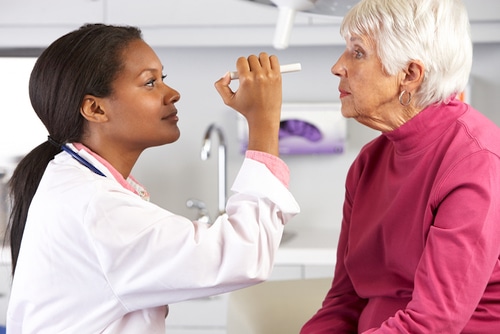Plenty of people allow what should be regular checkups to go by for years without attending them, be it a physical, an eye exam, dental work, etc. What should be routine turns to once in a blue moon? This has the potential to be dangerous for your health, especially when it comes to eye exams. At the very least, you could need a prescription change to help you see better. At the most extreme, you may have developed a severe eye disease over years of neglect. Eye exams are not scary or time-consuming, but they are essential to maintain eye health and quality of sight.
Prescription Changes
If you wear glasses or contacts, you may find it more challenging to see the longer you wait for your checkup. Perhaps you’ve been finding it difficult to read signs or menus at a restaurant while driving. This likely means your prescription has changed, and you need a new one. Fortunately, a prescription change is not the end of the world. It only means going in for an eye exam and coming out with new eyeglasses or contact lenses. You will find that you aren’t squinting as much to see and read what you used to see and read with no problem.
Eye Diseases
A more extreme example of eye neglect is the unknowing development of severe eye disease. The risk for eye disease increases with age, so you should schedule an eye exam appointment at least every two years. You should make an appointment annually if you have a family history of eye disease and troubles. One of the most serious eye diseases is called glaucoma. Glaucoma is relatively common and is referred to as the “silent thief of sight.” This is because glaucoma shows no warning signs during its development. Over time, fluid buildup creates pressure in the eye, damaging the optic nerve. The worst end to glaucoma is blindness, typically in both eyes. But, by getting regular eye exams, you can catch glaucoma and other eye diseases early. An eye exam is the only way to diagnose eye disease. There is no effective home remedy treatment, so medication or surgery are the best ways to prevent blindness from glaucoma. And glaucoma is not the only culprit. Other diseases, such as macular degeneration and cataracts, can go unnoticed and untreated without a regular eye exam, resulting in blindness.
Kid’s Exams
Eye exams are essential, no matter what your age. Maybe you get checked regularly, but your children do not. Even if your child’s school sponsors a vision screening, this is not the same as an official eye exam. And what’s more important–eye exams are crucial to a child’s academic success. Vision problems in children make it difficult for them to receive information presented visually.
Additionally, academia is even more visually demanding with the rise of technology in school and homework settings. Screens require more work for your eyes than printed text in books. The use of computers and screens to do work has been linked to an increase in nearsightedness and myopia in younger age groups. And a child suffering from vision problems is less likely to understand what good vision should look like. Some signals that your child is dealing with vision problems include headaches, difficulty focusing, and consistently rubbing their eyes. However, the only natural way to tell if they can see to the best of their ability is through regular eye examinations performed by a professional.
What to Expect in an Exam
An eye exam will last about an hour, give or take a few minutes. Your optometrist will review your patient history to see if you have any eye disease instances in your family or personal past and when your symptoms might have begun. Following this, he or she will measure your visual acuity. This test is one of the most commonly known: you read numbers and letters from a chart on the wall. Other tests include preliminary vision tests for depth perception, eye muscle movements, peripheral vision, and pupils’ responsiveness to light. For these, your optometrist will shine a light in your eye and direct you to look in various directions. You will also likely be tested using refraction to find your prescription for lenses or contacts. This is the giant mask with moving tabs when your optometrist will manufacture your lenses by moving the tabs based on what you say looks clearer. Everyone’s least favorite–the glaucoma test–usually ends the exam. This is the test in which a puff of air is released into the eye to test your eye’s resistance to that air. There are plenty of other tests if you have specific needs for your vision, but these are the main tests to be expected.
All in all, the optometrists at Jackson Davenport aim to make your exam as comfortable as possible. They are happy to answer any questions you have about exams or eye health. If you value your sight, seeing your optometrist once a year is best. So make sure you schedule your appointment today!

